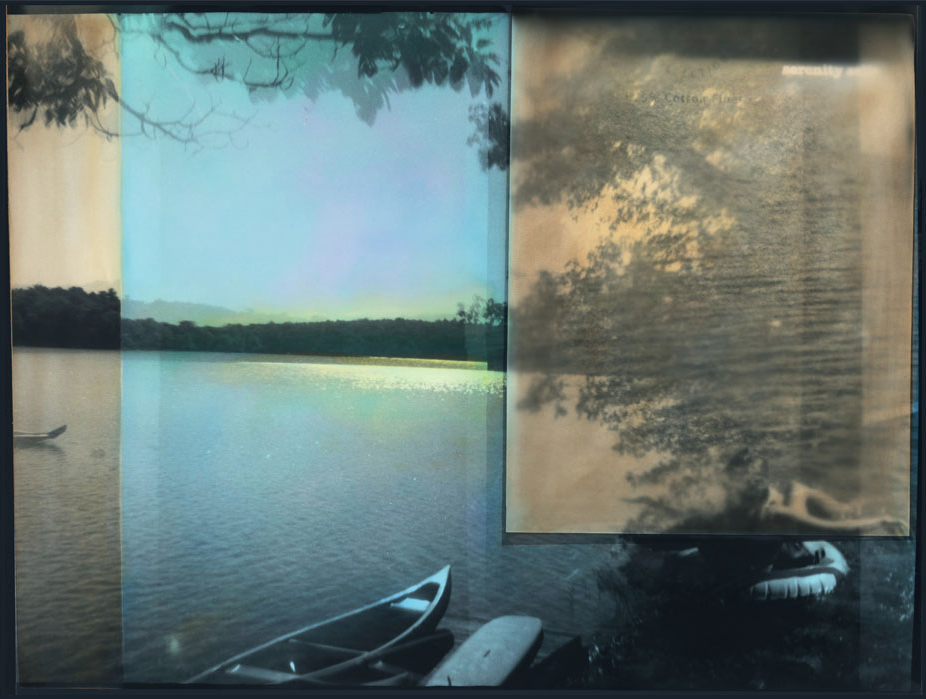Aline Smithson interview
Blue Mitchell: Where did you grow up and what was it like living there?
Aline Smithson: I grew up in Los Angeles, in a wonderful neighborhood called Silverlake. It was an ethnically diverse area, with lots of artists and creative types, located near the original site of the Disney Studios. It was really an ideal place to grow up — surrounded by mid-century architecture, incredible Mexican food, and endless 70-degree days.
I was exposed to art at an early age. My uncle was an artist, writer, and photographer and had an aesthetic that has influenced me in all areas of my life. I learned about contemporary architecture, designers like Ray and Charles Eames, and modern art from someone who had rarefied taste. But I was equally influenced by my wonderful parents–their incredible senses of humor, and the neighborhoods of Los Angeles that we explored—Little Toyko, Koreatown, Chinatown, the Latino and Armenian neighborhoods, which gave me an insight into the world. I loved living in a city where everyone looked different.
How did you first get into photography?
I started expressing myself at an early age—producing comic books, taking ceramics classes, designing clothes, drawing and painting—loving anything to do with art.
After graduating from college, I moved to New York City to make my living as an artist, and although I continued to paint, my career moved into the fashion world. I worked for many years as the Fashion Editor for Vogue Patterns Magazine in New York City, and then continued on in Los Angeles as a freelance photo stylist. As a fashion editor, I had the privilege of working with many exceptional fashion photographers, including Horst, Mario Testino, Patrick Demarchelier, Arthur Elgort, and Bert Stern. It didn’t dawn on me until several years later, that I was standing next to some of my best photography teachers.
I still use the darkroom for my black and white images, and it’s one of my favorite places to be.
What inspires you, photographically speaking?
Throughout my career as a fashion editor, a photo editor, an artist, a photographer, a person engaged in the world, I have looked at thousands upon thousands of images. I can still remember album covers, ad campaigns, editorial images that sparked something inside me. Discovering Irving Penn and Richard Avedon, then Diane Arbus and Ralph Meatyard and Matt Mahurin and Keith Carter were wondrous revelations into how we see. For me, it’s finding simplicity in the complex. It’s telling a story but not giving away the ending. Creating a memory that never happened. It’s a little bit of magic combined with poignancy. It’s giving something dignity or a second glance. Making the mundane mysterious. It’s celebrating life in a split second.
Where does your subject in art come from and how do you work?
Anything will spark an idea. I do get a lot of inspiration from paintings, but I also get inspired from the world around me– looking at out the window as I’m driving, walking my dog, going to a flea market–all sorts of things. I just keep an open mind.I think it’s important to have a deep well of ideas and visual references. It’s just as important to take things in than to produce them. I usually have 2 or 3 series going at the same time, which helps keep the creativity flowing andI realize that some series allow me to create, and some allow me to explore a subject.I still use the darkroom for my black and white images, and it’s one of my favorite places to be.
Aline, as a prolific photographer yourself, what kind of advice would you give to young artists that could help them succeed as a fine art photographer?
Hmmm. The fine art world is rapidly changing – the opportunities that once existed and traditional paths to success are morphing into completely different animals. Where the brick and mortar gallery used to be the goal, now many photographers are making a name for themselves through blogs and are selling their work on-line. Acceptance by not only gallerists and curators is important, but also by your peers who are now creating e-zines, writing blogs, and curating exhibitions. My advice is to be original, and not to lose sight that fine art photography is ultimately a product–that your prints need to be as pristine as your images. Make prints–it’s important to know what your finished product will look like! Explore every possibility and make connections. Let other photographers know that you appreciate their work, compliment a curator on an exhibition, be open to what is going on, and celebrate this community. Good will and giving backcounts for a lot.
I think success is making work that gives you a creative high, a renewed energy, and makes waking up each day a pleasure.
It’s important for your work to say something, to tell a story, to have a point of view, to have a voice. And to get back to your question, I’m not sure what success is anymore. It used to be having an exhibition, or publishing a book, or having a museum purchase your work–and yes, those are all major goals, but with this shifty economy and changing landscape of fine art photography, I think success is making work that gives you a creative high, a renewed energy, and makes waking up each day a pleasure. We might as well enjoy the process, because we aren’t going to get rich doing this.
Aline Smithson is a busy person, she was recently nominated for the Santa Fe Prize for Photography, you can read an article she wrote on Portland’s Photolucida at F-stop magazine, and be sure to check out her dynamic blog at http://lenscratch.com/
Smithson is also featured in the Summer issue of Artworks Magazine, with a 7 page spread featuring her Arrangement in Green and Black images. Find Artworks at Barnes and Nobles.


